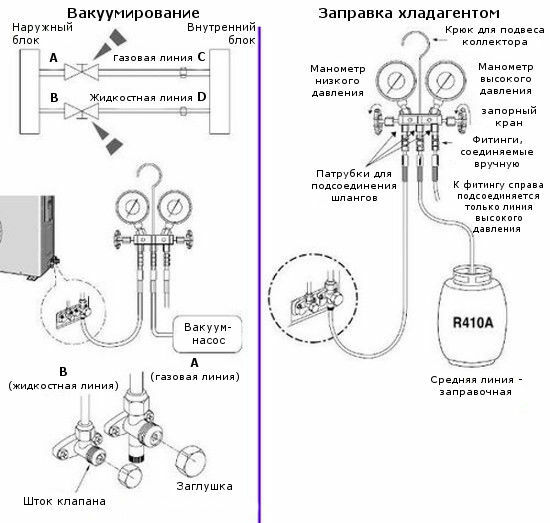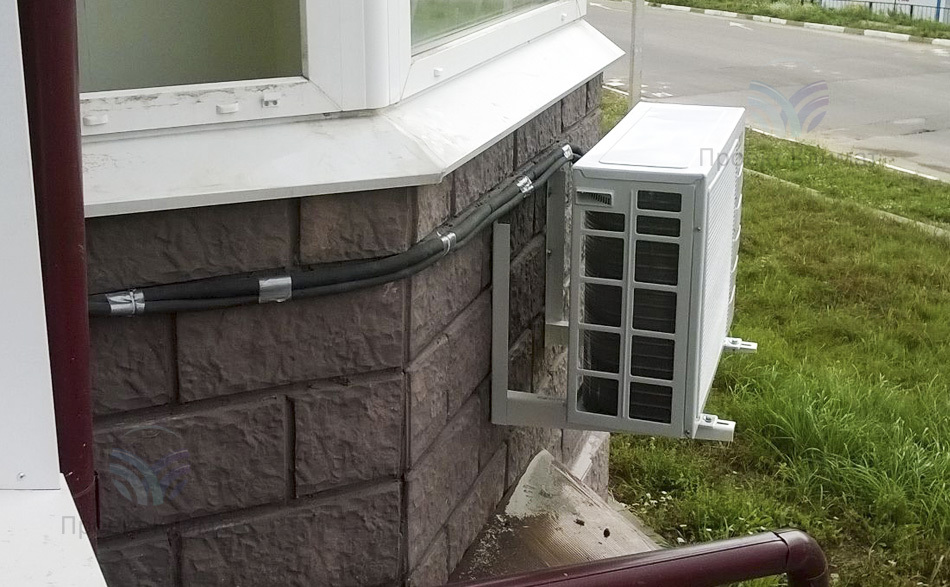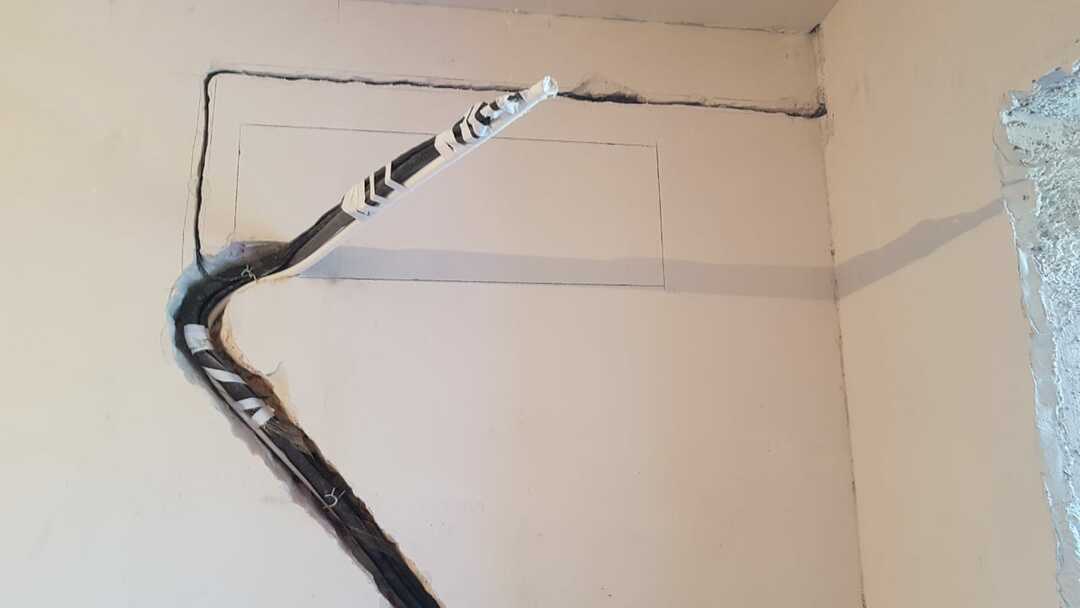The fan is one of the unobtrusive, but extremely important devices that help to create favorable conditions for work, rest and just enjoy your time.
Without it, computers, refrigerators, air conditioners and other equipment will not be able to function. For the most effective operation of various devices use the fan speed controller.
From our material you will learn about what are the regulators, the features of their work. We will also tell you how to assemble the device with your own hands and what is required for this.
The content of the article:
-
Types and features of the device
- Purpose of the device for speed control
- Main types of regulators
- Features of the use of devices
- Controller connection rules
- DIY assembly
- Conclusions and useful video on the topic
Types and features of the device
There are many types of fansthey are involved in the work of climate control systems, computers, laptops, refrigerators, many other office and home appliances.
To control the speed of rotation of its blades, often used a small element - the regulator. That it allows you to extend the life of the equipment, as well as significantly reduce the noise level in the room.
Image Gallery
A photo of

Fan speed controllers provide the ability to control equipment operation, select the most favorable mode for users and devices.

Various models of speed regulators are used to control the operation of single-phase and three-phase fan motors

The choice of the most appropriate speed of rotation of the fan blades in household appliances is done by turning the knob located in the center

To facilitate electrical work on the enclosures of the devices depict possible connection to the equipment and to the mains

Electronic models are controlled by remote sensors or external control systems.

Devices that regulate the rotational speed of the fans are also used in heat guns and heaters with fans encouraging the movement of heat.

One speed regulator can serve several ventilators if the total current strength does not exceed the permissible limits.

Regulators are installed in a heated room with a normal level of humidity in an open or hidden way, they are also placed in the dashboard guards.

Regulator for single-phase fan

The scope of the use of regulatory devices

Manual control of household appliances

Wiring device to the network

Sinusoidal electronic model

Speed controller for fan heaters

Service of several units

Features of installation of speed controllers
Purpose of the device for speed control
When an air conditioner or a fan is constantly operating at the maximum power mode provided by the manufacturer, this adversely affects the service life. Individual parts simply can not sustain such a rhythm and quickly break.
Therefore, it is often possible to meet recommendations to make a reserve of power when choosing various kinds of equipment so that it does not work at the limit.

To slow down the speed of rotation of the fan is used regulator. Moreover, there are models that serve both one and several channels simultaneously. For example, 6-channel
Also often in refrigeration, computers and other equipment, certain elements overheat during operation. So that they do not melt, the manufacturer has provided for their cooling at the expense of operating fans.
But not all tasks performed require a maximum fan / cooler speed. When an office computer works or maintain a constant temperature in a refrigeration unit, the load significantly less than when performing complex mathematical calculations or freezing, respectively. A fan that does not have a regulator will rotate at the same speed.

Manufacturers offer various models of regulators that you can install yourself using the recommendations from the instructions.
The accumulation of a large number of powerful technology, functioning in one room, is able to create 50 decibel noise and more due to simultaneous fans at maximum revs.
In such an atmosphere, it is difficult for a person to work, he quickly gets tired. Therefore, it is advisable to use devices that can reduce the noise level of the fan, not only in the production shops, but also in office premises.
In addition to overheating of individual parts and reducing noise, regulators allow rational use of equipment, reducing and increasing, if necessary, the speed of rotation of the blades of the equipment. For example, in climate control systems used in many public places and industrial premises.
One of the important parts of smart ceiling ventilation devices the premises are speed controllers. Their work provides indicators of temperature sensors, humidity, pressure. Fans used to mix air in the gym, production hall or office room help save money spent on heating.

Powerful ventilation systems use transformer speed controllers. Their main disadvantage is the high cost.
This is due to the uniform distribution of the heated air circulating in the room. Fans pump the upper warm layers down, mixing them with the cooler lower ones. After all, it is important for a person’s comfort that it is warm in the lower part of the room, and not under the ceiling. Regulators in such systems monitor the speed of rotation, slowing and accelerating the speed of the blades.
Main types of regulators
Fan speed controllers are in demand. The market is replete with various offers and an ordinary user, not familiar with the features of devices, it is easy to get lost among the various offers.

The regulator should be selected taking into account the power of the equipment to which it is to be attached.
Regulators differ in the principle of operation.
There are such types of devices:
- thyristor;
- triac;
- frequency;
- transformer.
First type devices used to adjust the speed of single-phase devices with protection against overheating. The change in speed is due to the influence of the regulator on the power supply voltage.
Second type is a kind of thyristor devices. The regulator can simultaneously control DC and AC devices. It is characterized by the possibility of a smooth decrease / increase in the speed of rotation at a fan voltage up to 220 V.

To control the speed of 2 or more fans, you can use the 5-channel regulator
Third type devices changes the frequency of the supplied voltage. The main task is to get the supply voltage in the range of 0-480 V. The controllers are used for three-phase equipment in the room ventilation systems and in powerful air conditioners.
Transformer controllers can operate with single and three-phase current. They change the output voltage, adjusting the fan and protecting the device from overheating. Can be used in automatic mode to adjust the speed of several powerful fans, taking into account the indicators of pressure sensors, temperature, humidity and others.

Transformer regulators are reliable. They are able to work in complex systems, adjusting the fan speed without constant user intervention.
Most often used in the life of triac regulators. They are classified as XGE. You can find many offers from different manufacturers - they are compact and reliable. Moreover, the range of prices will also be very wide.
Transformer devices are quite expensive - depending on additional features, they can cost $ 700 or more. They are RGE type regulators and are able to regulate the speed of very powerful fans used in industry.
Features of the use of devices
Fan speed regulators are used in industrial equipment, in office premises, gyms, cafes, and other public places. Also, you can often find such controllers in climate control systems for home use.

To use the speed change device, simply connect it to the fan.
Ventilation systems used in fitness centers as well air conditioning included for heating in office premises, most often contain a speed regulator. Moreover, this is not a simple cheap option, but an expensive transformer device that can regulate the speed of rotation of powerful instruments.
Image Gallery
A photo of

To adjust the speed of single-phase fans, convenient devices are used, for example, SGR devices.

The universal housing of the regulator allows you to install the device in a wall outlet or on the wall

Small devices can be used in complicated circuits with several ventilating units.

When selecting a device, it is important to take into account, in addition to the nominal values, the starting currents

Speed controller for domestic fans

Pluses of universal design

Ability to install in complex circuits

Features of selection of a speed controller
Depending on the design features, the controllers are:
- mechanical control;
- automatic.
Autotransformer regulators are most often used in complex systems, where the indicators for action taken from a temperature sensor, pressure, movement, humidity or a photo sensor are used as a command. By slowing down the speed of rotation, the devices can reduce energy consumption.

Regulators with mechanical control are connected according to the instructions and the scheme. They can replace the usual switch by mounting the controller in the wall
The mechanical control of the controllers is carried out manually - the device contains a wheel that allows you to smoothly or stepwise change the speed of rotation. This can often be found in the triac models.
Among the regulators used to optimize the operation of industrial and domestic equipment, devices such as Vents, Cever, Vortice, EnergySaver, Delta t °, Telenordik and others.
The most common use of regulatory equipment in the domestic environment is a computer and a laptop. It is here that the most frequently used regulator that controls and changes the speed of the cooler. Due to this device, the technician creates significantly less noise during operation.

For computers, you can choose the most suitable option based on personal preferences - a huge amount of offers on the market
Controllers for the cooler are both simple and with additional features. These can be models with backlight, with a temperature sensor, with a warning signal, with emergency shutdown, etc.
In appearance emit regulators with and without display. The first option is more expensive, and the second is cheaper. This device is often called reobas.
Manufacturers offer models that control the operation of one or more fans. Good reviews are the speed controllers of coolers from companies such as Scythe, NZXT, Reeven, AeroCool, Aqua Computer, Strike-X Advance Black, Akasa Fan Controller, Cooler Master, Innovatek, Gelid, Lian Li and others

A regulator for a cooler that does not have a display costs much less. But it has no additional functions.
The use of the controller in the computer significantly reduces the noise level, which has a positive effect on the well-being and mood of the user - nothing buzzes or roars. Also, which is important, helps to avoid overheating of the technology itself, thereby prolonging its service life.
Controller connection rules
To connect the fan speed control, you can use the services of specialists or try to cope on their own. There are no principal features in the connection - it is quite possible to cope with such a task on our own.

All bona fide manufacturers must attach instructions for the use and installation of their products.
Depending on the design features and the type of equipment serviced, the controllers can be installed:
- on the wall, as invoice socket;
- inside the wall;
- inside the equipment case;
- in a special cabinet that controls smart devices at home. This is usually the terminal strip;
- connect to computer
To personally connect the regulator, you must first carefully read the instructions offered by the manufacturer. Such a document usually comes bundled with the device and contains useful recommendations on how to connect, how to use and maintain.
Wall and wall models should be fixed with screws and dowels to the wall. Components are most often supplied by the manufacturer with the main device. Also in the instructions for the regulator, you can see the scheme of its connection. This will greatly facilitate further work on its proper installation.

Schemes for connecting regulators from different manufacturers may vary. Therefore, you should carefully consider the recommendations before installation.
The speed controller is connected to the cable that supplies the fan, according to the manufacturer's scheme. The main goal is to cut the phase, zero and earth wires and connect the wires to the input and output terminals, observing the recommendations. In the case when the fan has its own separate switch, it will have to be replaced with a regulator, dismantling the first one as unnecessary.
Don't forget that cross section at the supply and connecting cables must correspond to the maximum current voltage of the connected device.

It is important to find the input and output openings on the connected device to connect the supply cable of the corresponding section. This will help the scheme attached by the manufacturer.
If you have to connect the controller to a PC or laptop, then first you have to find out what the maximum allowable temperature of the individual components of the equipment. Otherwise, you can permanently lose the computer, which will overheat and burn important parts - the processor, motherboard, graphics card and others.
The model of the selected reobasa also has instructions and recommendations for connecting from the manufacturer. It is important to adhere to the schemes shown on its pages when installing the device yourself.

If there is a need to connect more than one fan, then you can buy a multi-channel reobas
There are regulators built into the case and devices that are purchased separately. To connect them correctly, follow the instructions.
For example, a built-in controller has on / off buttons outside the system unit. The wires from the regulator are connected to the cooler wires. Depending on the model, the reobas can control the speed of 2, 4 and more fans in parallel.

For computer fans and others used at home, you can make a regulator with your own hands.
A separate regulator for the cooler is installed in the 3.5 or 5.25-inch bay. Its wires are also connected to the coolers, and additional sensors, if they are included, join the relevant components of the system unit, the state of which they will follow.
DIY assembly
The fan speed controller can be assembled on its own. For this you need the simplest components, a soldering iron and some free time.

To make your own controller, you can use various components, choosing the most suitable option for yourself
So, for the manufacture of a simple controller to take:
- resistor;
- variable resistor;
- transistor.
The base of the transistor to be soldered to the center contact of the variable resistor, and the collector - to its extreme output. To the other edge of the variable resistor you need to solder a 1 kΩ resistor. The second output of the resistor should be soldered to the emitter of the transistor.

The manufacturing scheme of the regulator, consisting of 3 elements, is the simplest and safest
It now remains to solder the input voltage wire to the collector of the transistor, which is already bonded to the extreme output of the variable resistor, and the “plus” output to its emitter.
To test the homemade in action will need any working fan. To evaluate the homemade reobas, you have to connect the wire from the emitter to the fan wire with a “+” sign. A homemade output voltage wire running from the collector is connected to the power supply.

After finishing to collect a homemade device for adjusting the revolutions, be sure to check it in work.
The wire with the sign "-" is connected directly, bypassing the homemade controller. It now remains to check the soldered device in action.
To reduce / increase the speed of rotation of the blades of the cooler, you need to turn the wheel of the variable resistor and observe the change in the number of revolutions.

If you wish, you can create a controller with your own hands that controls 2 fans at once.
This self-made device is safe to use, because the wire with a “-” sign goes directly. Therefore, the fan is not afraid if something suddenly closes in the welded regulator.
Such a controller can be used to adjust the speed of the cooler, exhaust fan and others.
Conclusions and useful video on the topic
Video about the features of the connection and use of the fan speed controller from Vents company:
Detailed video about the types of regulators, the principles of their work and the features of connection:
Video instruction with explanations of each step when doing work on assembling the revolutions controller of the cooler with your own hands. Moreover, to perform these actions you do not need to be an expert - everything is quite simple:
Video information on the creation of a fan speed controller:
Overview of the electronic autotransformer fan speed controller:
After reviewing the types of fan speed controllers and the rules for their connection, you can choose the best option that can meet the needs of the user. If desired, you can entrust the installation questions to specialists. If you want to test your strength, then it is easy to assemble a simple device yourself.
Have questions on the topic of the article, have found any shortcomings, or is there any information you want to share with our readers? Please leave comments at the bottom of the article.


